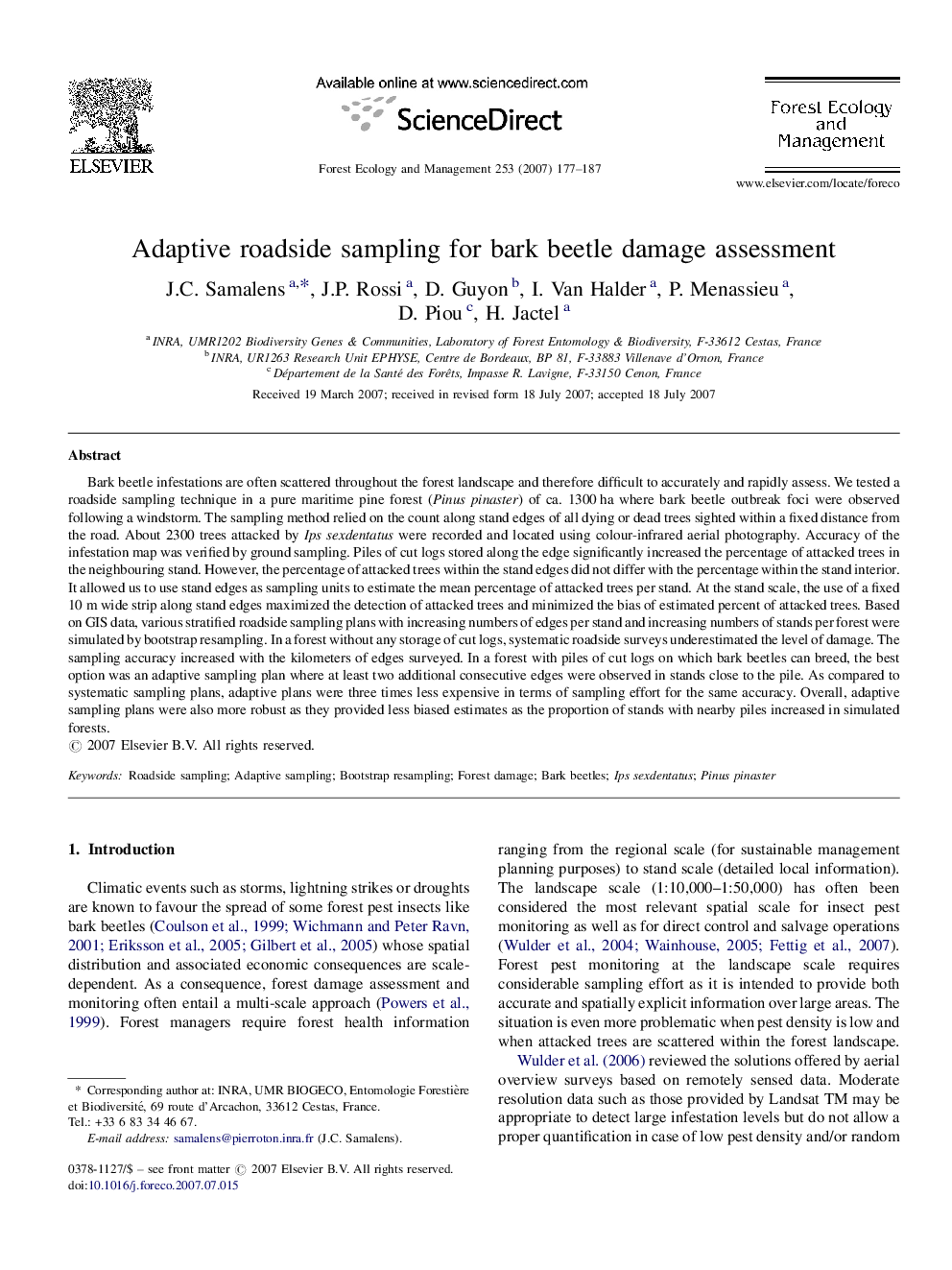| کد مقاله | کد نشریه | سال انتشار | مقاله انگلیسی | نسخه تمام متن |
|---|---|---|---|---|
| 89749 | 159354 | 2007 | 11 صفحه PDF | دانلود رایگان |

Bark beetle infestations are often scattered throughout the forest landscape and therefore difficult to accurately and rapidly assess. We tested a roadside sampling technique in a pure maritime pine forest (Pinus pinaster) of ca. 1300 ha where bark beetle outbreak foci were observed following a windstorm. The sampling method relied on the count along stand edges of all dying or dead trees sighted within a fixed distance from the road. About 2300 trees attacked by Ips sexdentatus were recorded and located using colour-infrared aerial photography. Accuracy of the infestation map was verified by ground sampling. Piles of cut logs stored along the edge significantly increased the percentage of attacked trees in the neighbouring stand. However, the percentage of attacked trees within the stand edges did not differ with the percentage within the stand interior. It allowed us to use stand edges as sampling units to estimate the mean percentage of attacked trees per stand. At the stand scale, the use of a fixed 10 m wide strip along stand edges maximized the detection of attacked trees and minimized the bias of estimated percent of attacked trees. Based on GIS data, various stratified roadside sampling plans with increasing numbers of edges per stand and increasing numbers of stands per forest were simulated by bootstrap resampling. In a forest without any storage of cut logs, systematic roadside surveys underestimated the level of damage. The sampling accuracy increased with the kilometers of edges surveyed. In a forest with piles of cut logs on which bark beetles can breed, the best option was an adaptive sampling plan where at least two additional consecutive edges were observed in stands close to the pile. As compared to systematic sampling plans, adaptive plans were three times less expensive in terms of sampling effort for the same accuracy. Overall, adaptive sampling plans were also more robust as they provided less biased estimates as the proportion of stands with nearby piles increased in simulated forests.
Journal: Forest Ecology and Management - Volume 253, Issues 1–3, 15 December 2007, Pages 177–187